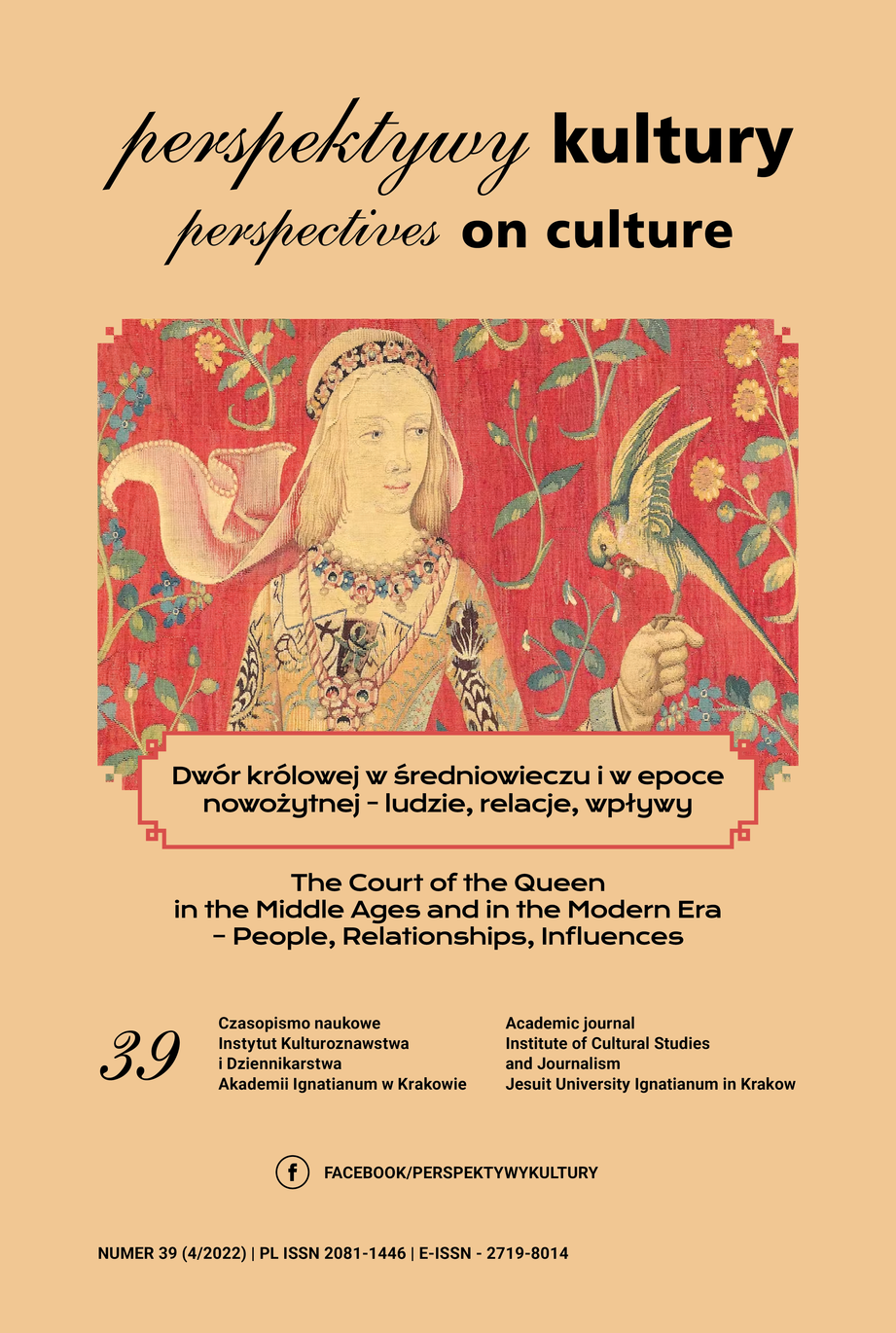The Creation of Maria Clementina Sobieska’s Court and Disputes over its Financing
Abstract
After serious perturbations and escaping from imperial prison, Maria Clementina Sobieska married James Stuart and settled in Rome. She was immediately caught in the frenzy of the fiercely rival Jacobite milieu. The main factions were formed by the royal favorites James Murray and John Hay, versus their enemy John Erskine, Duke of Mar. Maria Clementina – probably at the urging of the favorites – was deprived of her ladies-in-waiting, companions, who should have been the wives of aristocrats negatively perceived by Stuart. Meanwhile, Sobieska reluctantly welcomed Marjorie Hay to her apartment. It soon became clear that the Queen was working with a circle hostile to the King’s favorites, demanding her husband’s attention and perhaps even access to his political correspondence and contacts with Jacobites. When Stuart entrusted the care of his elder son to James Murray, depriving the Queen of her only serious duty and limiting her contacts with her son, Maria Clementine left the palace and took refuge in a convent. As a result of mediation and pressure of European courts, she returned to her husband, who had sent off John and Marjorie Hay. The Queen managed to win independence, and her husband created a separate court for her. The misunderstandings also concerned the financing of Sobieska’s entourage, and the few surviving bills allow us to indicate what she herself spent her money on.
References
Archivio di Stato di Roma, t. 338.
Narodny Gistaryczny Archiu Biełarusi, fond 694, opis 12, rkps 358, 360.
Royal Archives, Stuart Papers, rkps Main 43, 44, 84, 87, 127, 128, 130, 131, 158, 174, 176.
Gilbert, J.T. (ed.) (1894). Narratives of the Detention, Liberation and Marriage of Maria Clementina Stuart Styled Queen of Great Britain and Ireland with Contemporary Letters and Papers Now for the First Time Published. Dublin: Printed for the Editor.
Betts, S. (2015). Matriarchs of The Royal House of Stuarts: Negotiating Personal and Dynastic Ambition, Motherhood, And Adversity (1613–1662). W: E. Woodacre i C. Fleiner (red.), Royal Mothers and Their Ruling Children. Wielding Political Authority from Antiquity to the Early Modern Era. London: Winchester University Press.
Breccola, G. (2020). Il matrimonio di Giacomo III Stuart e Maria Clementina Sobieska a Montefiascone. W: Il matrimonio di Giacomo III Stuart e Maria Clementina Sobieska: atti del Convegno (Montefiascone, 30 novembre 2019). Viterbo: Archeoares, 34–47.
Corp, E. (2011). The Stuarts in Italy, 1719–1766. A Royal Court in Permament Exile. Cambridge: University Press.
Corp, E. (2018). Sir David Nairne. The Life of a Scottish Jacobite at the Court of The Exiled Stuarts. Studies in the History and Culture of Scotland, nr 8. Oxford–Bern–Berlin–Bruxelles–Frankfurt a/Main–New York–Wien: Peter Lang.
Genet Rouffiac, N. (2000). The Irish Jacobite Exile in France 1692–1715. W: T. Barnard i J. Fenlon (red.), The Dukes of Ormonde, 1610–1745. Woolbridge: Longman.
Komaszyński, M. (1983). Maria Kazimiera d`Arquien Sobieska królowa Polski (1641–1716). Kraków: Wydawnictwo Literackie.
Maclean Kybett, S. (1988). Bonnie Prince Charlie. A Biography. London–Sydney–Wellington: Unwin Hyman.
McLynn, F. (2003). Bonnie Prince Charles. London: Pimilco.
Roszkowska, W. (1984) Oława królewiczów Sobieskich. Wrocław: Ossolineum.
Skrzypietz, A. (2005). Bezkrólewie po śmierci Jana III Sobieskiego w narracji ambasadora francuskiego Melchiora de Polignac. W: L. Kochanowicz, R. Nahorny i R. Włodarczyk (red.), Narracje–(Auto)biografia–Etyka. Wrocław: Wydawnictwo Naukowe Dolnośląskiej Szkoły Wyższej Edukacji TWP, 301–314.
Skrzypietz, A. (2008). Kłopoty małżeńskie Marii Klementyny Sobieskiej. W: S. Achremczyk (red.), Między barokiem a oświeceniem. Staropolski regionalizm. Olsztyn: Towarzystwo Naukowe i Ośrodek Badań Naukowych im. W. Kętrzyńskiego w Olsztynie, 230–244.
Skrzypietz, A. (2011). Królewscy synowie – Jakub, Aleksander i Konstanty Sobiescy. Katowice: Wydawnictwo Uniwersytetu Śląskiego.
Skrzypietz, A. (2022). Maria Klementyna Sobieska, królowa i służebnica Boża. Katowice: Uniwersytet Śląski.
Szajnocha, K. (1909). Wnuka króla Jana III. Szkice historyczne. Warszawa: Gebethner i Wolff.
Copyright (c) 2022 Jesuit University Ignatianum in Krakow

This work is licensed under a Creative Commons Attribution-NoDerivatives 4.0 International License.
Autor, zgłaszając swój artykuł, wyraża zgodę na korzystanie przez Wydawnictwo Uniwersystet Ignatianum z utworu na następujących polach eksploatacji:
- utrwalania utworu w formie papierowej, a także na nośniku cyfrowym lub magnetycznym;
- zwielokrotnienia utworu dowolną techniką, bez ograniczenia ilości wydań i liczby egzemplarzy;
- rozpowszechniania utworu i jego zwielokrotnionych egzemplarzy na jakimkolwiek nośniku, w tym wprowadzenia do obrotu, sprzedaży, użyczenia, najmu;
- wprowadzenia utworu do pamięci komputera;
- rozpowszechniania utworu w sieciach informatycznych, w tym w sieci Internet;
- publicznego wykonania, wystawienia, wyświetlenia, odtworzenia oraz nadawania i reemitowania, a także publicznego udostępniania utworu w taki sposób, aby każdy mógł mieć do niego dostęp w miejscu i czasie przez siebie wybranym.
Wydawca zobowiązuje się szanować osobiste prawa autorskie do utworu.





